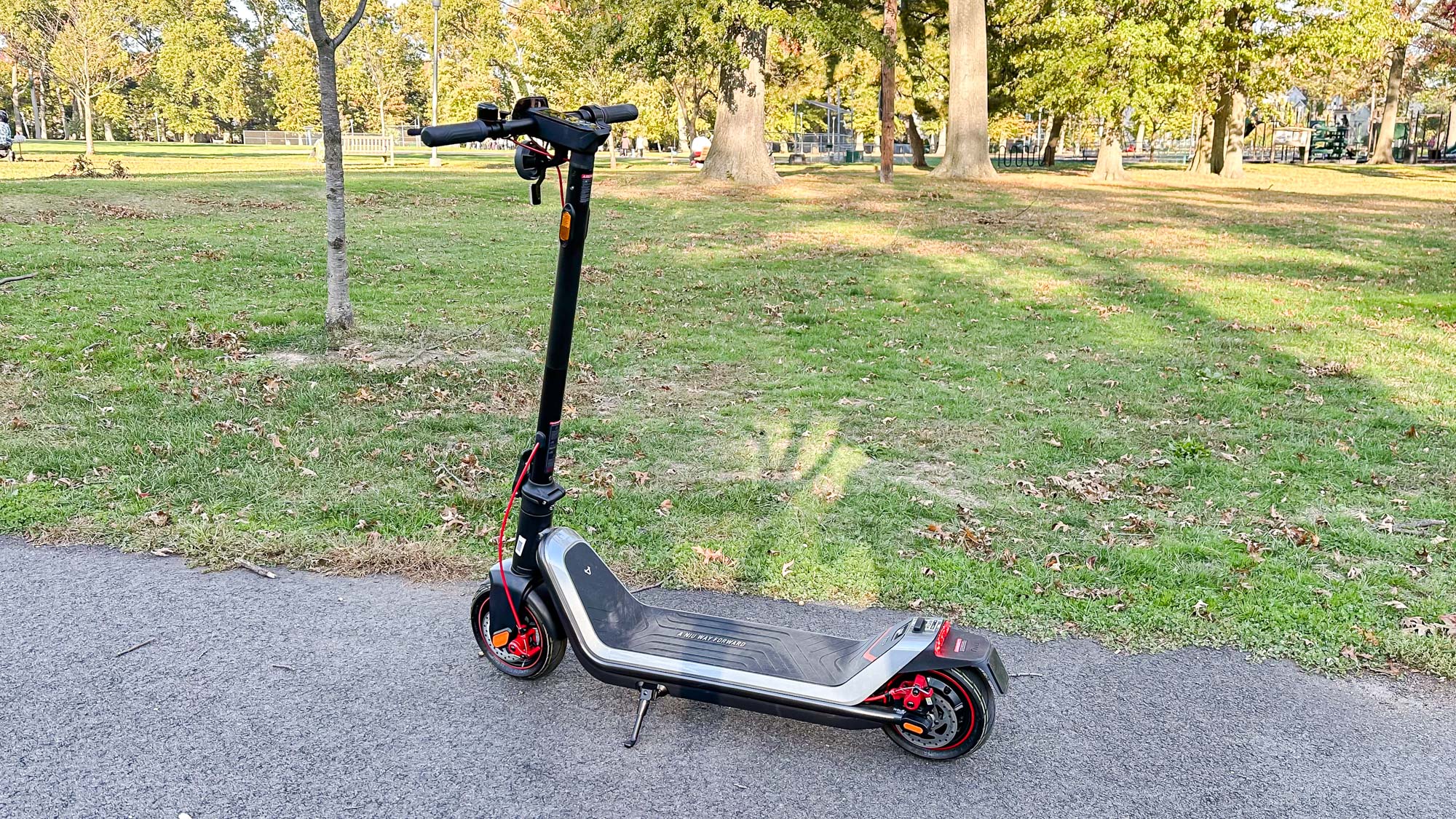I test electric scooters for a living and here are my top 5 buying tips

As the editor of the best electric scooters buying guide on Tom's Guide, I've had the chance to ride dozens of scooters over the years. As part of my testing, I've them all over the suburbs of New Jersey, onto and off of trains, and scooted around New York City to see how they hold up over a variety of conditions.
In the process, I've learned more than a few things about makes makes a good scooter great, and things I would want to know before buying one myself. And now, I'm passing that knowledge to you. Here are five things you should consider when buying an electric scooter, so that the model you get will serve you well.
Range estimates are wildly optimistic
Almost all electric scooters will come with an advertised range — the distance it can go before its battery needs to be recharged. Unless you weigh less than 150 pounds and only plan on riding the scooter on a completely flat road, don't expect to get anywhere close to what the company claims.
In my experience — as someone who lives in a hilly area and weighs closer to 200 pounds than he'd like to admit — I will typically get about 50 to 60 percent of the advertised range. Mostly, this is a matter of convenience, as you'll have to charge the scooter more frequently than you thought. But, if you have a longer commute — say, upwards of three miles each way — you may find yourself recharging your scooter every night.
If range anxiety is an issue, then look for a scooter with a larger battery, like the Niu Kqi3 Max or the Segway Ninebot Kickscooter Max. Just keep in mind that larger batteries mean heavier scooters. Both models have an advertised range of around 40 miles but they're both relatively heavy at about 40 pounds each.
Keep it light — if you can
If you're planning to use the scooter as a last-mile transportation — you take the train or bus, but then have to walk a good distance to get to your work or your home — you'll want to look for a scooter that's small and light enough to easily carry up and down station stairs.
Here, you want a scooter that weighs less than 30 pounds. The Unagi Model One and the Unagi Model One Voyager, both of which weigh around 26 pounds, are at the top of my list here, but the Razor Icon is another less expensive alternative.
Get instant access to breaking news, the hottest reviews, great deals and helpful tips.
Get air-filled wheels
Electric scooters generally come with two types of wheels: air-filled (or pneumatic) and solid rubber. If you can, find a model that uses air-filled wheels; your arms and legs will thank you, especially if you're riding over rough terrain.
While there's a greater risk of puncturing the tire on a nail or something sharp, pneumatic tires have a lot more give than hard rubber, so it's not as jarring when you go over potholes or other bumps.
However, your choices may be limited, especially with smaller and less expensive scooters. In an effort to mitigate the harshness of a rubber wheel, some scooters will have holes cut into the rubber for a little more give.
Get a more powerful motor if you live in a hilly area
The power of an electric scooter's motor is measured in Watts, and as with many things in life, the higher the number the better. However, you don't always need the most powerful motor around. If you live in a relatively flat area — or you're a smaller person — a scooter with a 250W or 300W motor should more than suffice.
If, however, you live in San Francisco or some other area with lots of hills, you'll want an electric scooter with at least a 500W motor. That way, you'll have enough power to get up the steeps.
Get a scooter with a basket if you're going shopping
Scooters are a great way to get from work to home, but if you want to use it for more — such as picking up some groceries from the store — you'll want to get a scooter with a basket. Otherwise, you'll have to either load up your backpack, or try and balance grocery bags on your handlebars. Not ideal.
Of the scooters I've tested, the Razor Ecosmart Cargo and the Glion Balto are two of my favorites with baskets. The Razor is the faster of the two, and looks more like a moped; the Glion Balto is a little slower, but it folds into a more compact shape, so it's the better option if you're tight on space.
More from Tom's Guide

Michael A. Prospero is the U.S. Editor-in-Chief for Tom’s Guide. He oversees all evergreen content and oversees the Homes, Smart Home, and Fitness/Wearables categories for the site. In his spare time, he also tests out the latest drones, electric scooters, and smart home gadgets, such as video doorbells. Before his tenure at Tom's Guide, he was the Reviews Editor for Laptop Magazine, a reporter at Fast Company, the Times of Trenton, and, many eons back, an intern at George magazine. He received his undergraduate degree from Boston College, where he worked on the campus newspaper The Heights, and then attended the Columbia University school of Journalism. When he’s not testing out the latest running watch, electric scooter, or skiing or training for a marathon, he’s probably using the latest sous vide machine, smoker, or pizza oven, to the delight — or chagrin — of his family.
